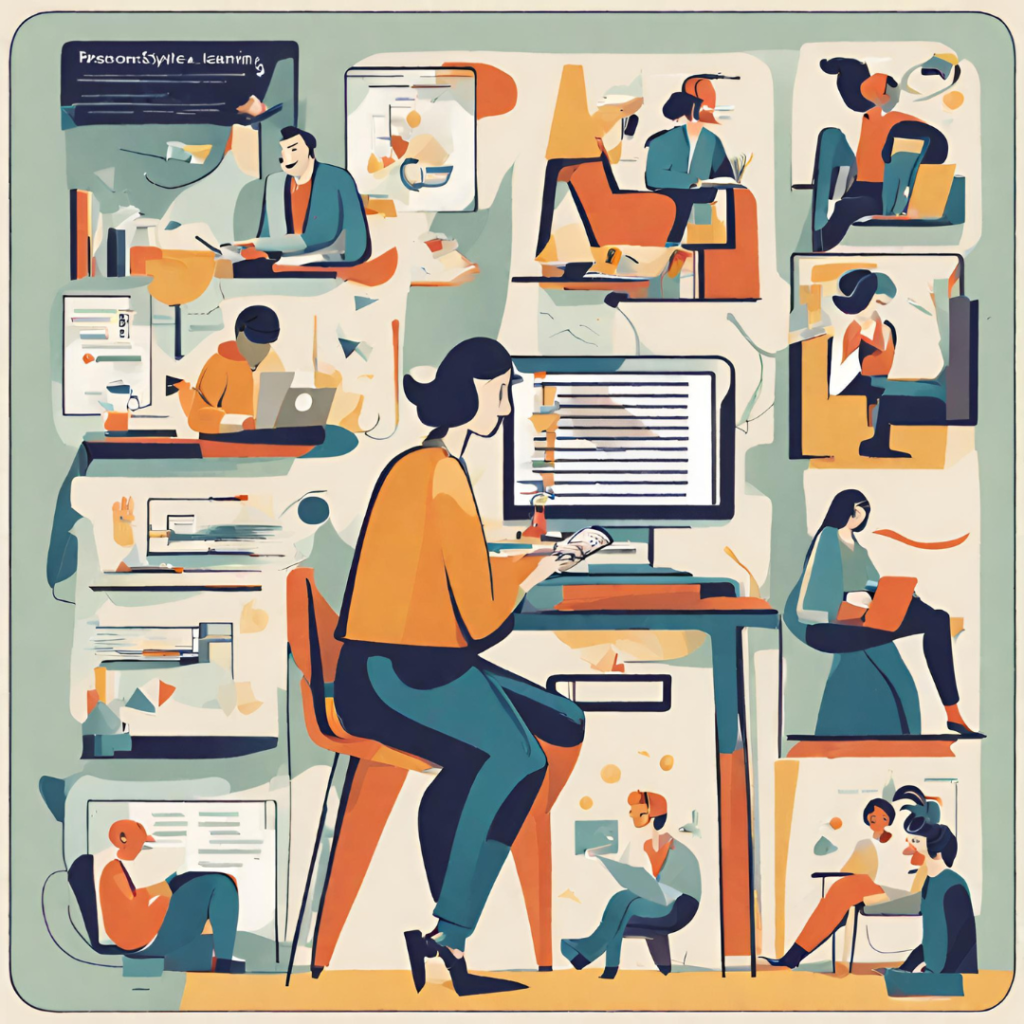
At the confluence of cognitive processes and personal inclinations lies a fascinating crossroad: the interplay between learning styles and personality types. Both realms, while studied independently for their implications in education and personal development, can offer amplified insights when considered in tandem. This article delves into the intricate dance between the ways we prefer to learn and the inherent traits that define who we are.
1. An Introduction to Learning Styles
Learning styles represent the preferred methods individuals utilize to grasp, process, and retain information. Recognizing and harnessing these preferences can significantly enhance one’s learning efficiency.
Different Learning Styles:
- Visual Learners: These individuals rely heavily on visual aids like diagrams, charts, and written notes. Colors and spatial arrangements play a crucial role in helping them comprehend and remember information.
- Auditory Learners: Sounds and rhythms resonate with auditory learners. They benefit from discussions, lectures, and even musical cues to facilitate their learning process.
- Kinesthetic Learners: Hands-on activities, experiments, and real-life experiences are the go-to methods for kinesthetic learners. They need to touch, feel, and move to understand concepts fully.
- Read/Write Learners: Predominantly found in traditional academic settings, these learners prefer information presented through words, whether reading or writing.
2. Unraveling the Myers-Briggs Personality Types
The Myers-Briggs Type Indicator (MBTI) categorizes individuals into 16 distinct personality types based on four dichotomies: extraversion/introversion, sensing/intuition, thinking/feeling, and judging/perceiving. These types provide deep insights into an individual’s behaviors, preferences, and ways of interacting with the world.
A Glimpse into Some MBTI Types:
- INTJ (The Architect): Visionaries with a keen analytical mind, often seen planning and strategizing.
- ESFP (The Performer): Sociable, lively, and enthusiastic, ESFPs thrive in the present moment, enjoying every experience.
- INFP (The Mediator): Dreamers and idealists, they are guided by principles and values, seeking harmony and deep connections.

3. How Learning Styles and Personality Types Intersect
While learning styles dictate the preferred methods of information acquisition, MBTI personality types can shed light on why these preferences exist. By exploring this intersection, one can cultivate a deeper self-awareness and tailor learning experiences for maximum effectiveness.
Some Points of Intersection:
- Visual Learners & INTJ: INTJs, with their analytical and strategic thinking, might lean towards visual learning. Diagrams and flowcharts allow them to map out complex systems and spot underlying patterns.
- Auditory Learners & ESFP: The sociable ESFPs, who thrive in interactive environments, could benefit from auditory learning. Group discussions, debates, and verbal exchanges resonate with their extroverted nature.
- Kinesthetic Learners & INFP: Given their penchant for personal experiences and deep connections, INFPs might lean towards kinesthetic learning. Experiential learning allows them to connect emotionally with the content.
4. Tailoring Educational Strategies Based on the Intersection
Educators and learners alike can reap immense benefits by considering the interplay between learning styles and MBTI types. Tailored strategies can lead to more engaged learning, better retention, and a deeper understanding of content.
Strategies to Consider:
- Customized Content Delivery: For a visual INTJ learner, presenting complex topics through diagrams or mind maps can be beneficial. For an auditory ESFP learner, group discussions or debates can make a topic come alive.
- Personalized Feedback: Recognizing a student’s MBTI type can help educators offer feedback in a manner most receptive to the student. For instance, an INFP might appreciate feedback that’s constructive yet sensitive to their values and feelings.
- Flexible Learning Environments: Offering varied learning environments, from quiet study zones to interactive group settings, can cater to different combinations of learning styles and personality types.

5. The Caveats and Considerations
While the intersection of learning styles and personality types offers valuable insights, it’s crucial to approach this with flexibility. Every individual is unique, and while certain patterns might emerge, there will always be exceptions.
Points to Ponder:
- Avoid Stereotyping: Just because an individual identifies with a particular MBTI type or learning style doesn’t mean they’re confined to those preferences.
- Dynamic Nature: Both learning styles and personality traits can evolve over time based on experiences, environment, and personal growth.
- Holistic View: Relying solely on MBTI and learning styles might be limiting. It’s essential to consider other factors like emotional intelligence, past experiences, and specific learning needs.
Conclusion
The confluence of learning styles and personality types offers a rich tapestry of insights for educators, students, and lifelong learners. By understanding and harnessing this intersection, we can create learning experiences that resonate deeply, ensuring not just retention of content but a genuine love for the learning process. As we navigate the myriad paths of education and personal growth, appreciating the unique ways we interact with knowledge can pave the way for more profound insights and lasting achievements.

